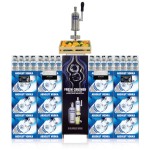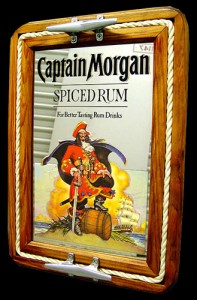Is the largest spirit category in the US heading for tough times?
 Despite the massive size of the vodka market at 70 million 9-liter cases, there are signs that the rate of growth will steadily decline in the years ahead. If nothing else, all products have life cycles (think bell-shaped curve) and tastes and preferences are subject to change over time. After all, what got vodka to its height in the first place were the changing preferences away from whiskies. Now, it’s Whiskey’s turn to move back into favor. But, that’s only part of the story.
Despite the massive size of the vodka market at 70 million 9-liter cases, there are signs that the rate of growth will steadily decline in the years ahead. If nothing else, all products have life cycles (think bell-shaped curve) and tastes and preferences are subject to change over time. After all, what got vodka to its height in the first place were the changing preferences away from whiskies. Now, it’s Whiskey’s turn to move back into favor. But, that’s only part of the story.
Vodka History
Who invented vodka is the subject of some debate – the Russians, Swedes or Poles – it really doesn’t matter for this analysis, so let’s fast forward to the US and the post WWII period.
Prior to the 1960s, whiskies (imported or domestic) were dominant with a smattering of gin preferences. Many distillers at the time looked down their noses at vodka, partly because “odorless, colorless and tasteless” was not in the distiller’s blending art and, partly because it was seen as the alcohol preference of excessive drinkers. Maybe I’m wrong, but I think the Smirnoff (or was it Popov) ad slogan “leaves you breathless” was a signal to have a drink anytime/anyplace and no one will know.
By the 1970s preferences among drinkers began to change in favor of vodka thanks to: James Bond, changing tastes of women (preferring mixable, sweet drinks), drinkers who wanted the effect of alcohol without the “silent shudder” and the emergence of interesting and fun concoctions (cocktails, such as the Moscow Mule).
The 1980s and 1990s brought further accelerated growth with vodka cocktails (think Sex and The City) and the advent and growth of imported 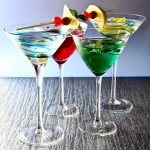 brands led by Absolut and it’s advertising. At the beginning of this period there were only a handful of imports, most notably Stoli, Finlandia and Absolut. But, a number of important factors changed the picture.
brands led by Absolut and it’s advertising. At the beginning of this period there were only a handful of imports, most notably Stoli, Finlandia and Absolut. But, a number of important factors changed the picture.
In the 1980s, based on Russian misadventures (Korean Airline, Olympic boycotts, etc), Absolut benefitted from the Stoli boycott and the door was open to other imports. In the mid 90s, brands like Ketel One and Grey Goose taught the consumer that super and ultra premium vodka brands were worth paying for. At the same time, flavored vodkas began to make their presence known and further changed the category.
The Flavor explosion
At first, the flavors had some meaning and a strategic role to play. Want to enhance the flavor of a drink, choose citrus vodka; make that Bloody Mary zing, choose spicy vodka; and so on. Gradually the ‘simplistic’ flavors gave way to the exotic – mango, strawberry, apple, peach, vanilla and so on.
By the 2000s, the flavors took hold and gradually moved from exotic to the ridiculous – marshmallow, whipped cream, sorbet, cake, candy, bacon, salmon and other flavors that, as the saying goes, I wouldn’t drink with your mouth.
While this senselessness was going on, another factor entered the market – the low priced imported segment. Brands like Svedka, Sobieski, Wodka and others basically said to the consumer, “Hey, you’ve been overpaying; here’s imported quality at a low price.”
The net result of the “tutti frutti” flavors and inexpensive brands has been to churn the market and create confusion. Both among the trade, stuck with dozens of fad flavors and brands, and consumers, who face a dizzying array of choices.
Where is it all heading?
The storm clouds on the horizon are coming from two main directions – craft products and whiskey and even a combination of the two.
Ironically, whiskey (particularly American) originally defeated by vodka, has come back and with a vengeance. From 2012 to 2013, the rate of whiskey’s growth was two and a half times faster than all vodka including flavored. Leading the whiskey charge were flavored whiskeys (the sweetness factor again); interest in unique cocktails (traditional and new) and mixologist skills; and the craft, small batch explosion.
Whiskies of all types have begun to capture the drinking imagination of consumers regardless of age or gender. They’re fun to talk about, to drink and to identify with – whether bourbon corn, rye, or malt – they represent serious products and an understanding that, unlike vodka, they require skill that is more than turning on a tap.

Enter the craft or small batch phenomenon. Not only is it fueling the whiskey growth, it’s also impacting the vodka category. Take a brand like Tito’s for example; it’s grown by over 40% compounded in the last five years, based largely on its “Hand Crafted” claim. Although, I wish someone could explain to me how you are hand crafted at nearly 1.5 million 9-liter cases.
Nevertheless, the craft concept, claim or whatever, is also becoming a factor in vodka with micro distilleries and the anti-filtration movement that’s just beginning. (By the way, the “unfiltered” vodka approach makes me chuckle… we’ve gone from filtered over charcoal, lava rocks, precious minerals and vestal virgins during a full moon to what, straight from the still?)
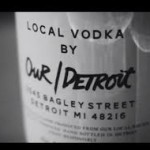
I think the Big Boys are starting to take notice of the vodka evolution. What choice do they have other than watch their sales go down and miss their bonuses. Take Absolut’s Elyx for example. It’s billed as “the single estate handcrafted vodka.” Other than marketing hype, I have no idea what they are trying to say about the brand. I think it has something to do with copper stills and an offbeat “global creative director.”
Also, Pernod Ricard’s Absolut is going into the micro distillery business and opening local distilleries around the world including Seattle, Detroit, London, Melbourne and others. It’s called Our/Vodka and supposedly the uniqueness of the concept will return the brand to its glory days. Good luck with that.
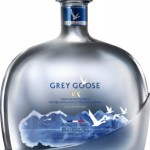
Finally, Bacardi’s Grey Goose is introducing Grey Goose VX, which “contains Cognac created from grapes from the Grande Champagne cru.” It’s currently only available at Travel Retail outlets, probably as a market test of the viability. According to The Spirits Business, “Bacardi has claimed Grey Goose VX (which stands for vodka exceptionelle) is a “significant step change for the vodka/white spirits category”.
So look for more churn in the vodka market in the years ahead. The growth will decelerate as the crazy flavors are put out to pasture (or wherever errant products go) and the competition from outside the category heats up.
The response from the vodka companies will be interesting to track. I can’t help but think of the expression, “Desperate times call for desperate measures.”

